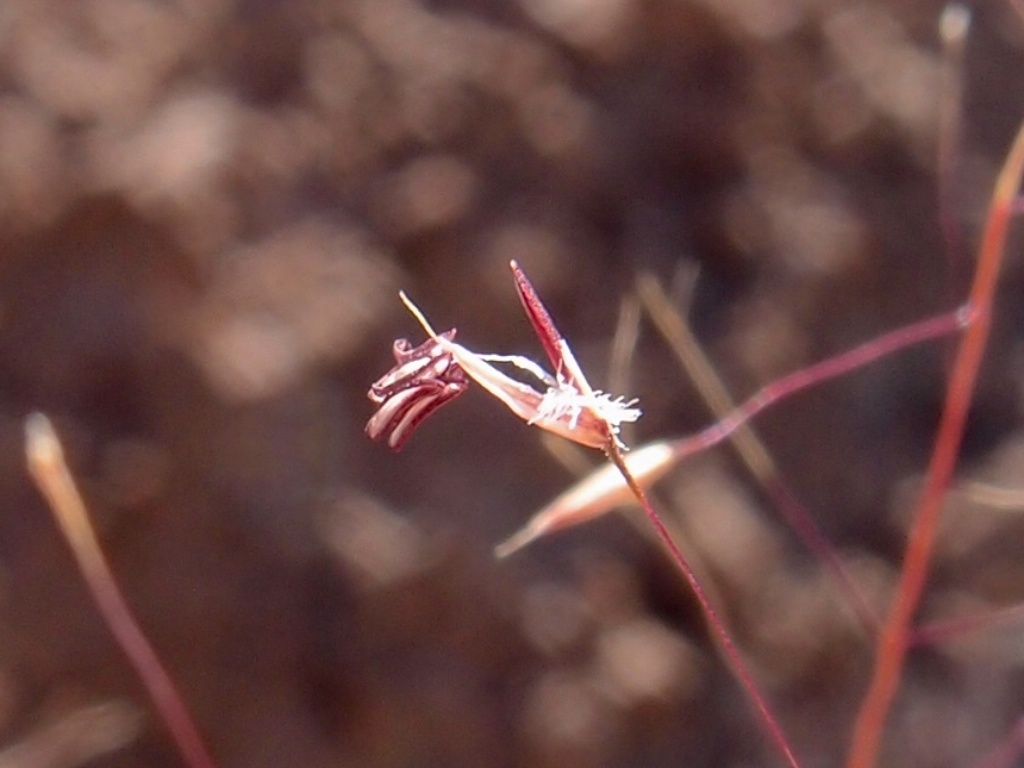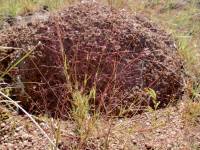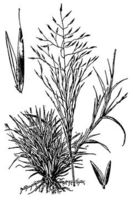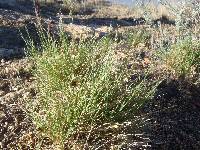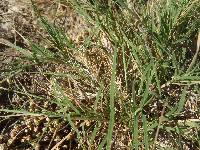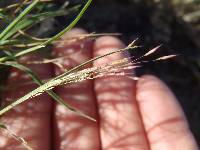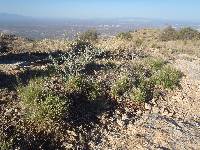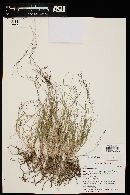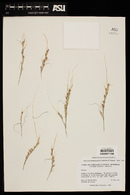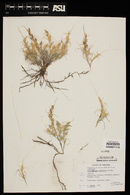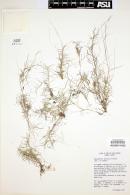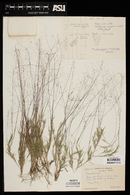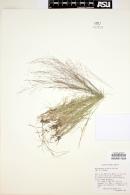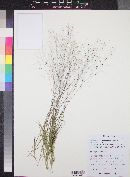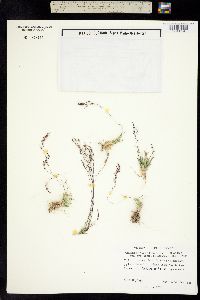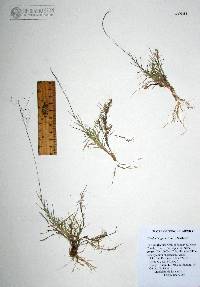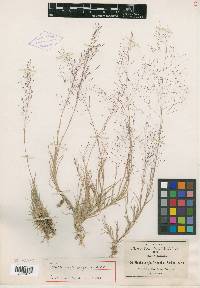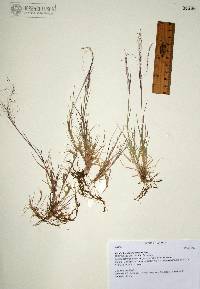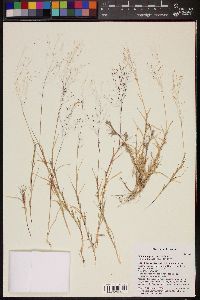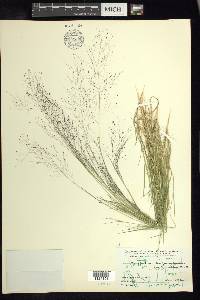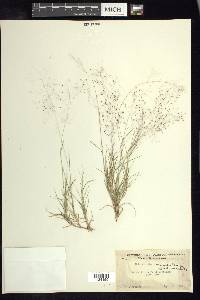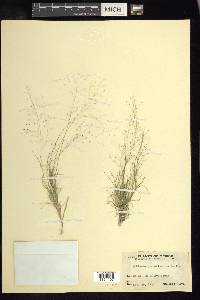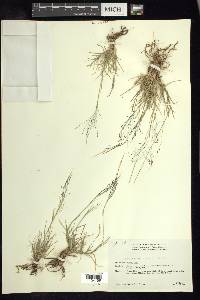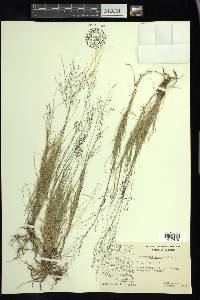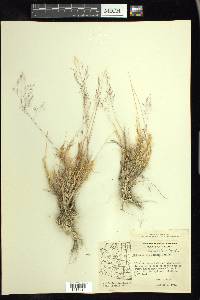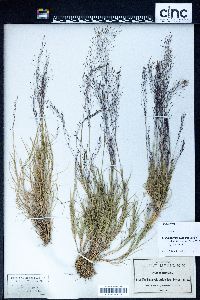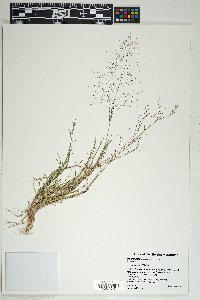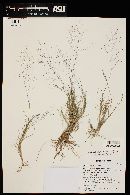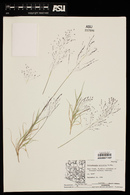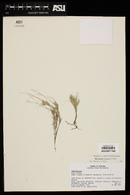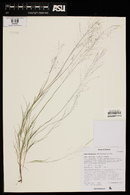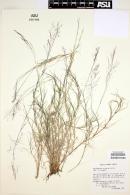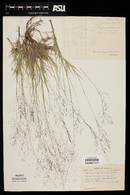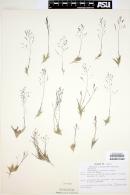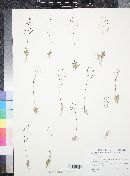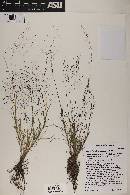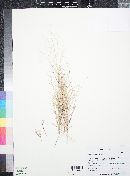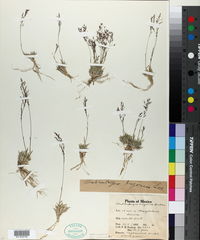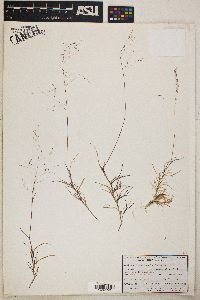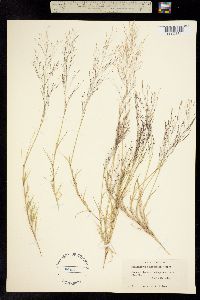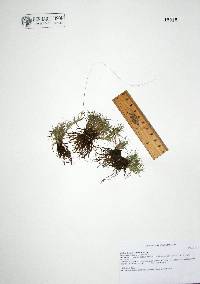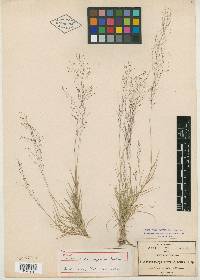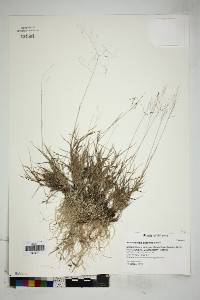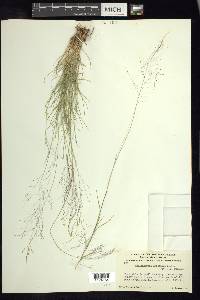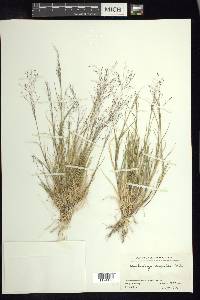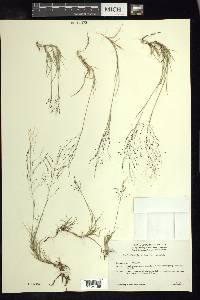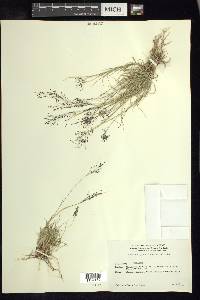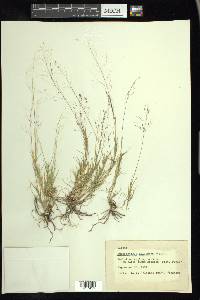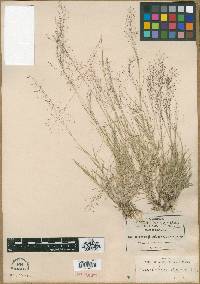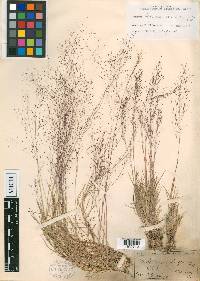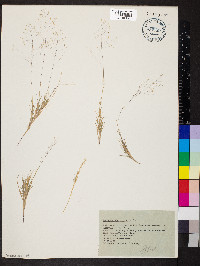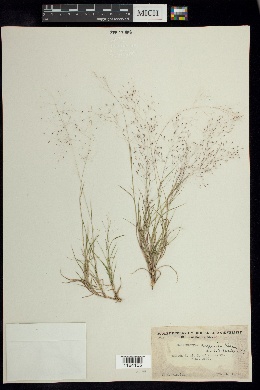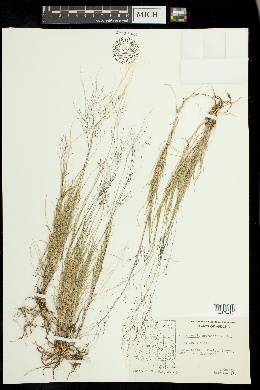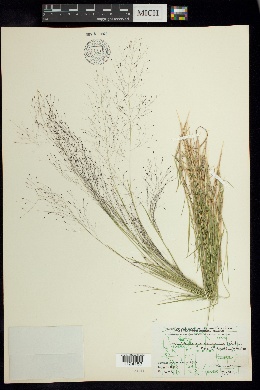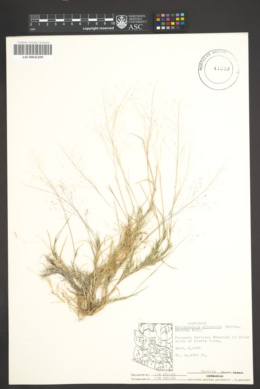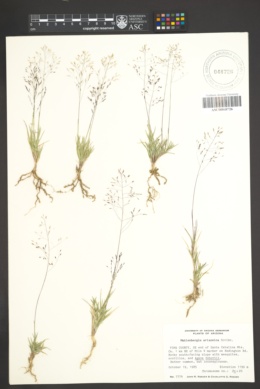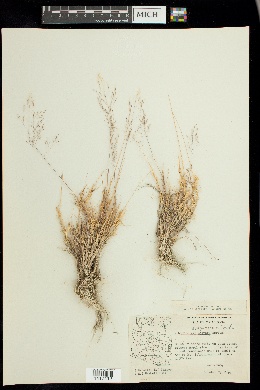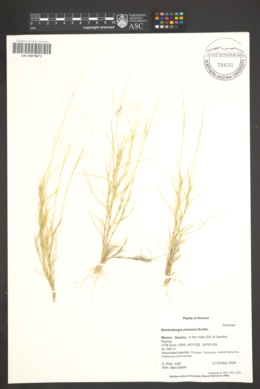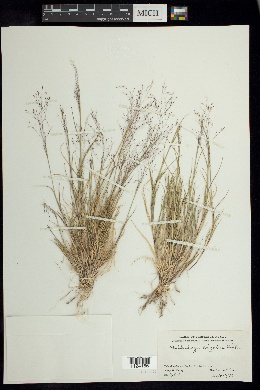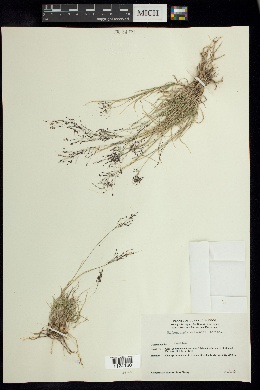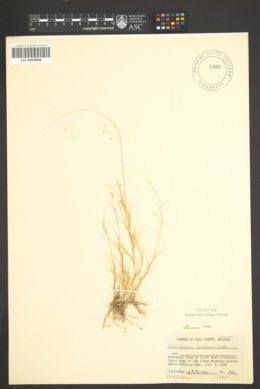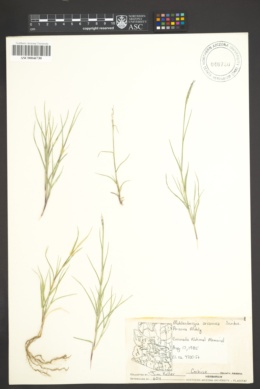Muhlenbergia arizonica
|
|
|
|
Family: Poaceae
Arizona Muhly, more... (es: liendrilla)
|
Plants perennial; cespitose, not rhizomatous. Culms 15-50 cm, erect to decumbent; internodes hispidulous or glabrous below the nodes. Sheaths from slightly shorter to slightly longer than the internodes, rounded to somewhat flattened but not keeled, hispidulous basally, glabrous distally, margins hyaline, not becoming spirally coiled when old; ligules 1-2 mm, hyaline, obtuse, minutely erose; blades 4-7 cm long, 0.8-2 mm wide, flat or folded, glabrous abaxially, scabridulous or hispidulous adaxially, midveins and margins conspicuous, thickened, white, and cartilaginous. Panicles 4-20 cm long, 4-15 cm wide, diffuse; primary branches 0.5-7.5 cm, capillary, diverging 40-90° from the rachises, naked basally; pedicels 2-16 mm, flexuous. Spikelets 2.1-3.1 mm. Glumes equal, 1-1.5 mm, 1-veined, apices scabridulous, obtuse to acute, sometimes minutely erose, unawned; lemmas 2-3.1 mm, elliptic, purplish, appressed-pubescent on the lower 3/4 of the midveins and margins, hairs to 0.6 mm, apices scabrous, acute, minutely bifid, awned, awns 0.5-1.1 mm; paleas 2.1-3.2 mm, elliptic, glabrous, acute; anthers 1.6-2.1 mm, purplish. Caryopses 1.3-1.7 mm, fusiform, sulcate dorsally, brownish. 2n = 20. Muhlenbergia arizonica grows in sandy drainages and gravelly canyons, and on plateaus and rocky slopes in open desert grasslands, at elevations of 1220-2230 m. Its range extends from the southwestern United States into northwestern Mexico. Flowering is from August to October. FNA 2003, Gould 1980 Common Name: Arizona muhly Duration: Perennial Nativity: Native Lifeform: Graminoid General: Low, tufted, non-rhizomatous perennial grass with stems 15-50 cm, erect to decumbent, unbranched but with short lateral shoots; internodes hispidulous or glabrous below the nodes. Vegetative: Blades 4-7 cm long, flat or folded, 0.5-2 mm wide, glabrous below, minutely roughened or hispidulous above, midveins and margins conspicuously thickened, white and cartilaginous; ligules 1-2 mm, hyaline, obtuse and minutely erose to rounded at apex; sheat Inflorescence: Open diffuse panicle 4-20 cm long, 4-15 cm wide, long exserted from upper sheath; primary branches capillary, naked basally, 0.5-7.5 cm, diverging 40-90 degrees from rachises; pedicels 2-16 mm, flexuous; spikelets 2-3 mm; glumes equal to each other in length, 1-1.5 mm, 1 veined, the apices minutely erose, unawned; lemmas 2-3 mm, elliptic, purplish, short-appressed pubescent along the midnerve and margins, minutely notched at apex and awned, the awns 0.5-1 mm; palea equaling or slightly exceeding the lemma. Ecology: Found along sandy drainages and in gravelly canyons, washes, and slopes from 3,000-5,000 ft (914-1524 m); flowers August-October. Distribution: s AZ, sw NM, nw MEX Notes: Muhlenbergia is a large and diverse grass genus primarily distinguished by having single-flowered spikelets with unequal glumes. M. arizonica is a small perennial bunchgrass with mostly basal and lower cauline leaves that have thickened white margins and midveins and a sparse, stiffly spreading inflorescence less than 20 cm long. M. torreyi and M. arenicola appear similar, but both those species lack the white margins and midveins on their blades and both have longer ligules, 2-9 mm long. Ethnobotany: Unknown Etymology: Muhlenbergia is named for Gotthilf Heinrich Ernst Muhlenberg (1753-1815) a clergyman and botanist from Pennsylvania; arizonica means of or from Arizona. Synonyms: None Editor: SBuckley, 2010 |

